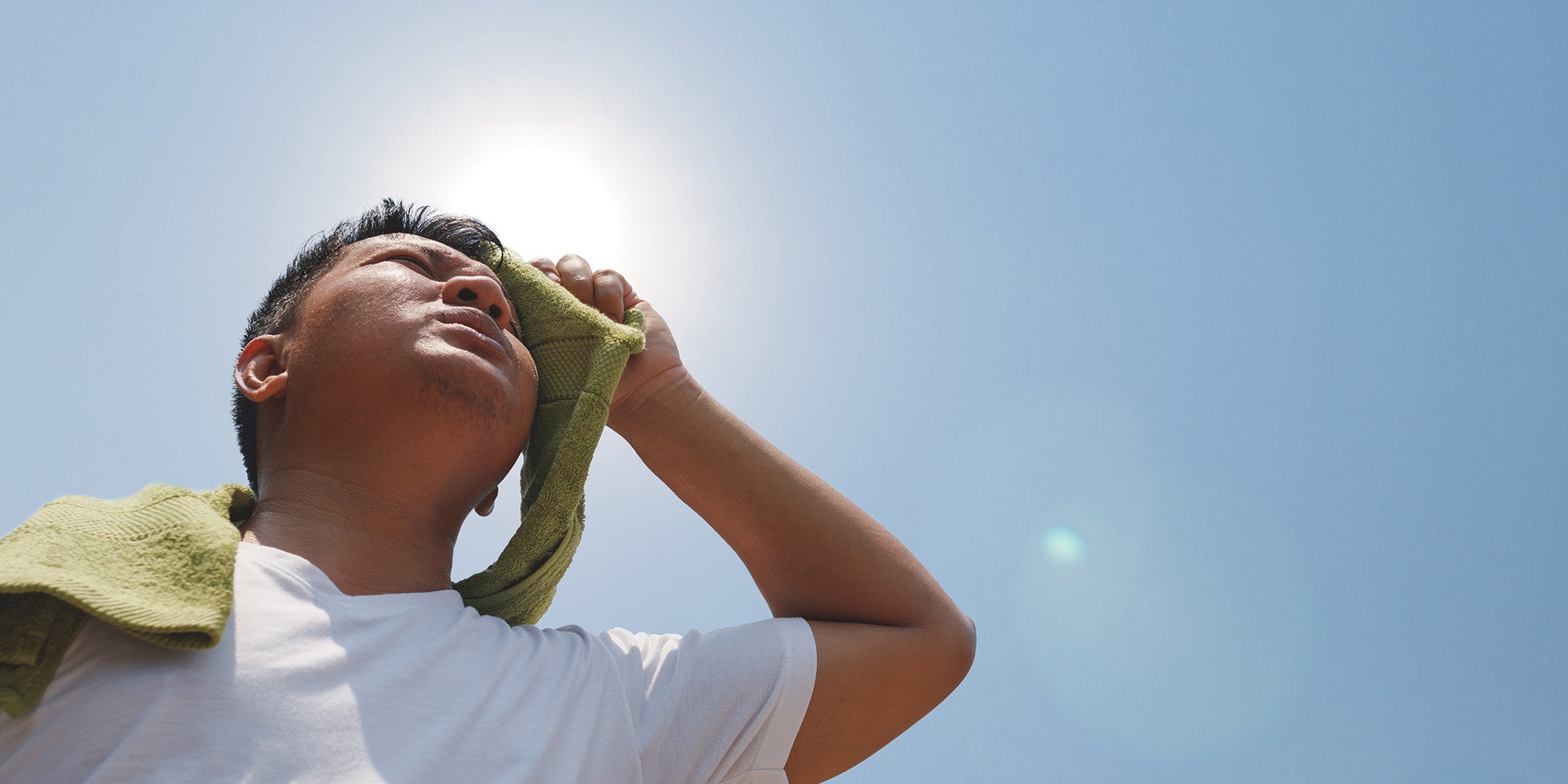
By Jolie Holschen, MD, Emergency Medicine
During the spring, summer and fall seasons, many athletes shift their athletic activities, training and events from indoor settings to outdoor settings.
But as the temperatures rise during these three seasons, the risk for heat stroke also rises.
If heat stroke happens, do you know what potentially life-saving steps to take?
Here we break down what heat stroke is, the key steps needed to treat someone with heat stroke, how to recover from heat stroke, heat stroke prevention tips and more.
What is heat stroke?
Heat stroke occurs when there is alteration in the central nervous system function and the core body temperature is greater than 104 degrees Fahrenheit. It is one of the most common causes of death in athletes. Heat stroke can happen in a matter of minutes or hours, and it can be life threatening or cause permanent damage if not promptly treated.
Athletes who suffer from heat stroke often show central nervous system effects such as confusion or combativeness or loss of consciousness.
Although exertional heat stroke can happen in cooler temperatures, it typically occurs in warm weather during events such as marathons and preseason football practices.
Athletes who suffer life-threatening heat stroke should be cooled on site before they are taken to the hospital, according to an expert panel's report published in the Prehospital Emergency Care journal.
There is a common misconception that the athlete will have stopped sweating, have hot skin or be unconscious, but none of these symptoms are required for heat stroke.
Cool first, transport second
The principle of "cool first, transport second" differs from the usual practice of calling 911 and getting to the hospital as soon as possible.
Experts recommend rapidly cooling the body to less than 102 degrees Fahrenheit (the threshold for critical cell damage) within 30 minutes of the time of collapse. Cooling should end once the body temperature drops to about 101.5 degrees Fahrenheit.
Cooling on site first allows the athlete's body temperature to more likely be reduced below the critical threshold within the 30-minute window. Transporting to the hospital prolongs the time to cooling due to preparing the person for transport and transport times while their body temperature is too high.
What is the “cooling” process?
The best cooling method is to immerse the athlete in a tub of cold water. If a tub isn't available, a tarp, shaped like a taco and filled with cold water, could be tried. (This is known as tarp-assisted cooling.) Less effective cooling methods include cold-water dousing, cold showers, fans and ice packs.
According to the report in the Prehospital Emergency Care journal, "Transportation of an exertional heat stroke patient should occur only if it is impossible to cool adequately onsite or after adequate cooling has been verified by a body temperature assessment." If the athlete cannot be cooled onsite, paramedics should try the most aggressive cooling methods possible in the ambulance, such as continuously applying cold wet towels.
What preventative actions can you take?
There are a couple of key preventative measures you can take to keep heat stroke at bay:
- Stay hydrated.
- Always wear loose-fitting, lightweight clothing.
- Get acclimated and slowly build up a tolerance to exercising in extreme heat. Train for a few weeks in increasing increments and your body will become more acclimated to the weather.
- Take rests under a tree or in cool, shady spots during the hottest peaks of the day.
- Move the exercise session to a cooler part of the day (such as in the morning or evening).
Remember to always take special precautions if you take medications or have a condition that causes increased risk or of heat-related issues and pay close attention to overheating.
Consult medical services if you begin experiencing symptoms.
Recovering from heat stroke
Recovery from heat stroke may include sensitivity to heat or hotter temperatures for a week or more. More serious cases may vary depending on the severity of the injury and require hospital stay. It is best to avoid exercise outdoors until your doctor says its safe to resume activities.
Jolie Holschen, MD, is an emergency medicine physician at Loyola Medicine and an associate professor in Loyola University Chicago's Stritch School of Medicine's department of emergency medicine. She is a fellow of the American College of Emergency Physicians and is board certified in emergency medicine and in the sports medicine subspecialty of emergency medicine.
Dr. Holschen received her medical degree at Washington University School of Medicine. She completed a residency in emergency medicine at the University of Chicago and a fellowship in sports medicine at University of South Carolina-Columbia.
You can book an appointment today to see many of Loyola Medicine's primary care or specialty providers by self-scheduling an in-person or virtual appointment using myLoyola.

